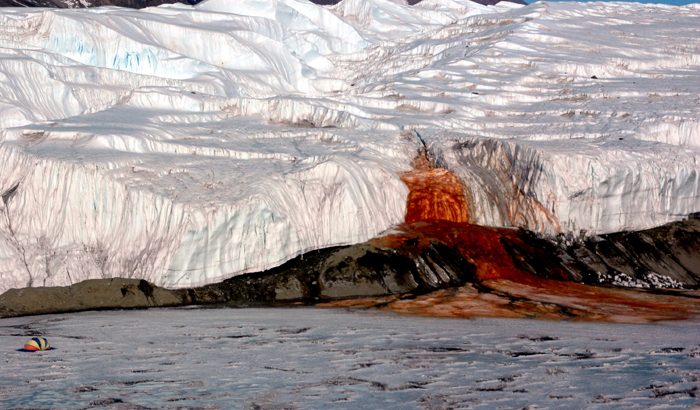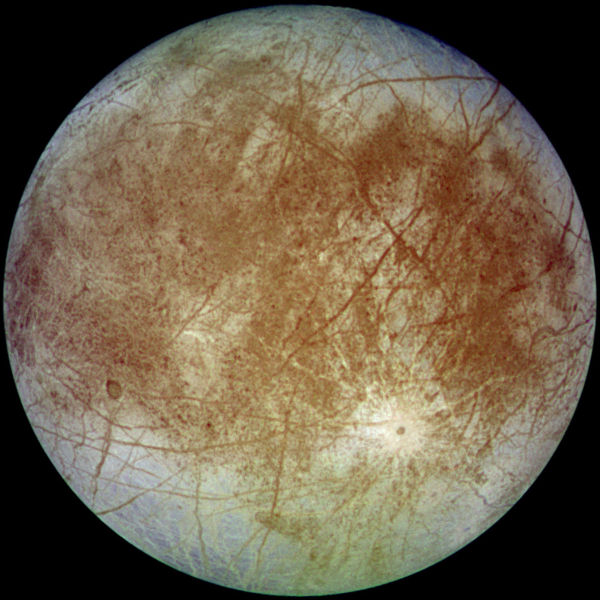|
Taking the plungeSpace robot headed for test in Antarctic lakePosted April 18, 2008
More Information
Project Web site: ENDURANCE
First, a swim around an ice-covered lake in Antarctica. Next, through the frozen surface of Jupiter’s moon Europa and possibly into a vast, liquid ocean that may host life as we’ve never known it. Of course, some 20 or 30 years may separate the deployment of an autonomous robot to these disparate, watery realms. But the search for life on another world has to start on this one. It will begin at Lake Bonney, one of a series of lakes in the McMurdo Dry Valleys, a relatively ice-free area in Antarctica that is the site of much scientific research each summer in the Southern Hemisphere. Peter Doran, one of several principal investigators engaged in a multi-year study of this unique ecosystem, is leading a team of engineers, planetary scientists from NASA and others in developing a tool that may some day probe an alien ocean. Nicknamed ENDURANCE, for Environmentally Non-Disturbing Under-ice Robotic ANtartic Explorer, the $2.3 million project will send an autonomous underwater vehicle (AUV) to Lake Bonney for two field seasons, beginning in November 2008. “It’s just going to revolutionize the way that we look at this lake,” Doran said of the upcoming deployment of the AUV in Bonney, a saline lake that is about 3 kilometers long and 1 ½ kilometers wide. An associate professor of earth and environmental sciences at the University of Illinois at Chicago, Doran is interested in how the region’s past climate still influences today’s lake ecosystem, particularly its hydrology, the study of the movement, distribution and quality of water. “It’s kind of a slow system,” he said, explaining that vestiges of ecological processes that began thousands of years ago can still be seen today. For example, today’s lakes are mere puddles compared to the large bodies of water that once dominated the valleys, according to Doran. A thick, salty, nutrient-rich layer of water in Bonney, where most of the lake’s photosynthetic microorganisms live, is carbon material from the retreat of those great lakes many millennia ago. Those organic leftovers are largely sustaining today’s organisms, whose photosynthetic processes would dictate they live closer to the surface in the freshwater layer below the ice cover. “The structure of that ecosystem is dictated by that past event that happened thousands of years ago — and it’s still happening today,” Doran said. (See related story: In the cold of the night.) The ability for life to survive in such inhospitable and unusual conditions such as Lake Bonney — or in equally harsh, inconceivable places like thermal vents at the ocean floor and within solid rock – holds out the possibility that organisms might thrive across the stars on distant moons and planets. “It’s the most important scientific question we can ask: Are we alone? Are we unique?” Doran said. “It’s a scientific question. It’s not some outrageous science fiction question. It’s a real, testable question. … It’s based on the fact that on Earth, wherever we find water, we find life.” There is a good case for possible life on Europa based on the prerequisite of water, according to Christopher McKay, a planetary scientist at the Space Science and Astrobiology Division at NASA’s Ames Research Center. He is a co-investigator on the ENDURANCE project. “The evidence for water beneath the ice of Europa is persuasive,” he explained. “The main points are the surface features on the ice — for example, icebergs — and the [alterations] of Jupiter’s magnetic field as Europa moves through it, indicating the presence of a large, subsurface conductor — a slightly salty ocean.” Stone Aerospace in Texas designed the robotic probe, which NASA’s Astrobiology Science and Technology for Exploring Planets (ASTEP) Program funded. It can swim untethered under the ice, creating three-dimensional maps of the underwater environments it explores. It carries a suite of instruments that allow it to measure water characteristics like salinity and acidity, and probe for evidence of microbial life. It looks a bit like a giant, stemless Portobello mushroom cap. The researchers field-tested the robot’s capabilities in February in frigid Lake Mendota on the campus of the University of Wisconsin at Madison. Previously, researchers had deployed an earlier version of ENDURANCE only in warm water settings. “The main thing was to test the impact of the cold and ice. There really was none. Any problems we had were unrelated to cold and ice,” Doran said. “We never expected it would. [The electronics] operate better in cold temperatures than warm temperatures.” An Air Force C-17 will transport the 1,350-kilogram robot to Antarctica. A helicopter will then fly its component pieces to Lake Bonney, where a construction crew will build a sort of “garage” around the robot, which the science team will use to deploy ENDURANCE into the lake. Doran said the ENDURANCE team chose Bonney for logistical and scientific reasons. “It’s one of the more interesting lakes in the Dry Valleys, because it’s really strongly stratified. It’s got a glacier sitting on the edge of it, with a strange, red saline discharge going into it — Blood Falls — so there’s a huge potential … for discovery,” he explained. “Getting up to the glacier face, to see if there is any discharge from Blood Falls into the lake itself, or if it’s all on the surface.” While there are instruments already in the lake that measure similar properties as the ENDURANCE will, the robot offers the luxury of unfettered movement, Doran noted. “Like most people who study lakes, we do most of our measurements at one point in the center of the lake. We don’t have the freedom to move around. We’ve got a good record at the deepest part of the lake, year after year, but this AUV will allow us to spread out, and then do a three-dimensional view of the lake that we’ve never had before, to see how the lake changes in the third dimension,” he said. ENDURANCE will spend about a month mapping and sampling the lake, and then repeat the process the following season, so Doran and his colleagues can compare changes in the lake from one season to the next. The data will be important for their work on the National Science Foundation-funded McMurdo Dry Valleys Long Term Ecological Research program, a multi-year, multi-disciplinary study of the ecosystem. McKay said an eventual mission to Europa is perhaps 30 years in the future, and would require a probe much smaller than the ENDURANCE. “The relevance of these tests for a future Europa mission is mostly with respect to the autonomy and navigation software.” Doran said the ENDURANCE expedition to Lake Bonney would prepare scientists and engineers for the bigger show ahead. “What we’re doing is we’re testing the approaches: How do you do science autonomously? You’re not going to be on Europa. Whatever you send there is going to have to be smart enough to make its own decisions on how to do sampling, and where to go and what to do. “What we’re testing are the strategies,” he added. “It’s like a dress rehearsal on a small scale.” NSF-funded research in this story: Peter Doran, University of Illinois at Chicago, http://www.evl.uic.edu/endurance/endurance.html. |



For USAP Participants |
For The Public |
For Researchers and EducatorsContact UsU.S. National Science FoundationOffice of Polar Programs Geosciences Directorate 2415 Eisenhower Avenue, Suite W7100 Alexandria, VA 22314 Sign up for the NSF Office of Polar Programs newsletter and events. Feedback Form |




